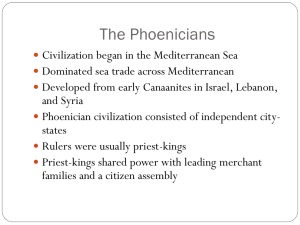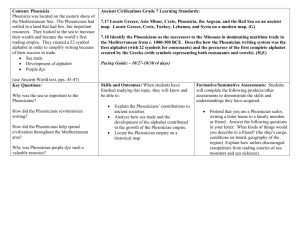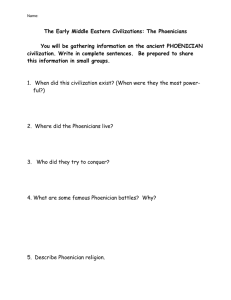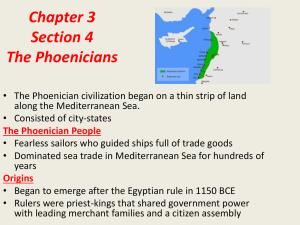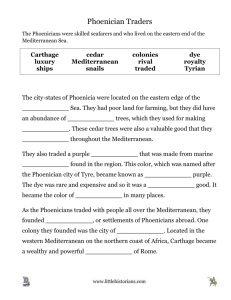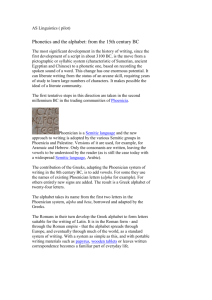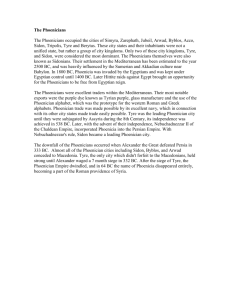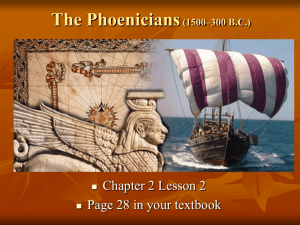File
advertisement
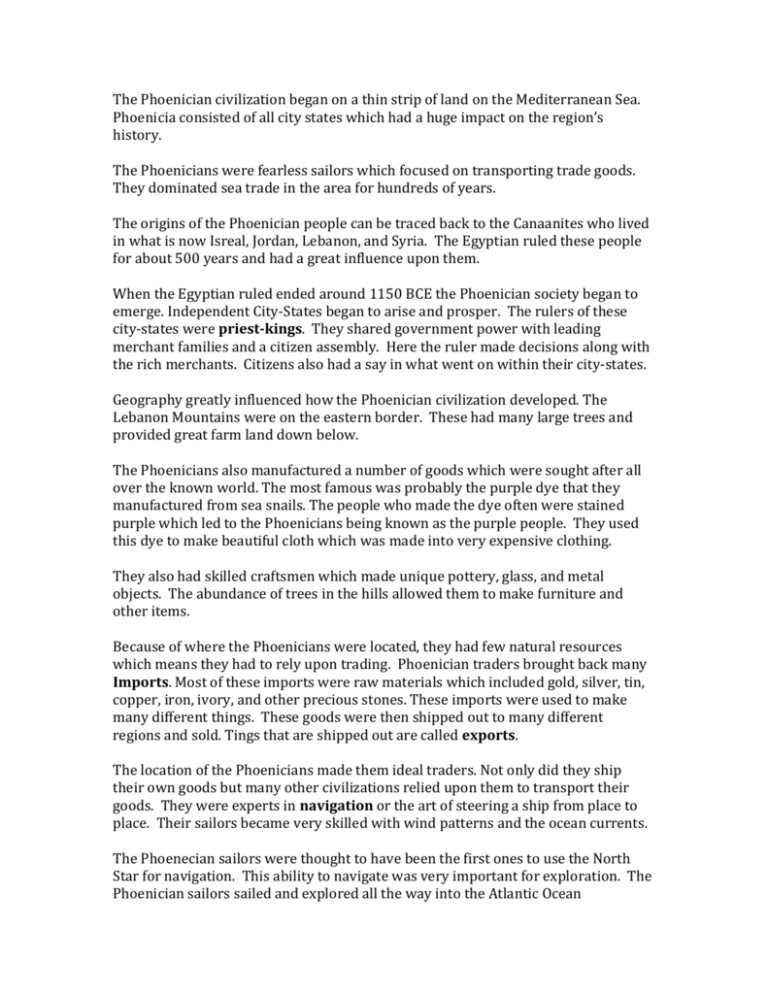
The Phoenician civilization began on a thin strip of land on the Mediterranean Sea. Phoenicia consisted of all city states which had a huge impact on the region’s history. The Phoenicians were fearless sailors which focused on transporting trade goods. They dominated sea trade in the area for hundreds of years. The origins of the Phoenician people can be traced back to the Canaanites who lived in what is now Isreal, Jordan, Lebanon, and Syria. The Egyptian ruled these people for about 500 years and had a great influence upon them. When the Egyptian ruled ended around 1150 BCE the Phoenician society began to emerge. Independent City-States began to arise and prosper. The rulers of these city-states were priest-kings. They shared government power with leading merchant families and a citizen assembly. Here the ruler made decisions along with the rich merchants. Citizens also had a say in what went on within their city-states. Geography greatly influenced how the Phoenician civilization developed. The Lebanon Mountains were on the eastern border. These had many large trees and provided great farm land down below. The Phoenicians also manufactured a number of goods which were sought after all over the known world. The most famous was probably the purple dye that they manufactured from sea snails. The people who made the dye often were stained purple which led to the Phoenicians being known as the purple people. They used this dye to make beautiful cloth which was made into very expensive clothing. They also had skilled craftsmen which made unique pottery, glass, and metal objects. The abundance of trees in the hills allowed them to make furniture and other items. Because of where the Phoenicians were located, they had few natural resources which means they had to rely upon trading. Phoenician traders brought back many Imports. Most of these imports were raw materials which included gold, silver, tin, copper, iron, ivory, and other precious stones. These imports were used to make many different things. These goods were then shipped out to many different regions and sold. Tings that are shipped out are called exports. The location of the Phoenicians made them ideal traders. Not only did they ship their own goods but many other civilizations relied upon them to transport their goods. They were experts in navigation or the art of steering a ship from place to place. Their sailors became very skilled with wind patterns and the ocean currents. The Phoenecian sailors were thought to have been the first ones to use the North Star for navigation. This ability to navigate was very important for exploration. The Phoenician sailors sailed and explored all the way into the Atlantic Ocean discovering new lands and more importantly, precious metals. They explored for riches. Phoenicians set up many colonies. Because of there exploration they found many safe harbors or places where ships could be anchored and loaded or unloaded. At first these harbors were used just to get supplies but soon the fertile land around them began to attract farmers. From these farms settlements arose and became colonies. A colony is a place ruled by a distant country. One colony that arose into a rich city-state was called Carthage. Carthage ended up setting up it’s own colonies and fought in three wars with the Romans. The last war that was fought resulted in the Romans burning Carthage to the ground. Roman eventually took over all of the Phoenician colonies. Many of the Phoenician achievements were absorbed by Greece and Rome. This was done through cultural diffusion. Cultural diffusion is the spreading of cultural traits from one region to another. Because the Phoenicians traded with so many different people they were perfect for spreading new ideas and culture around their area of the globe. One race of people they had a major influence on was the Greeks. The Greeks adopted their system of weights and measurements and spread them throughout the world. The Phoenicians are probably best known for their alphabet. Before the Phoenicians the main system of writing was cuneiform. The Phoenicians developed an alphabet which is a small set of letters or symbols which each stands for a single sound. Their alphabet had 22 symbols. Now a person only had to learn 22 symbols instead of hundreds in order to write. The people who traded with the Phoenicians learned their system of writing in order to communicate with them. The Greeks began using the alphabet around 500 BCE. The Greeks gave the letters names and the word “alphabet” comes from the names of the first two letters in the Greek alphabet “ alpha and beta”. Around 100 BCE the Romans adopted the Greek alphabet and changed a couple letters resulting in the alphabet that we have today.
